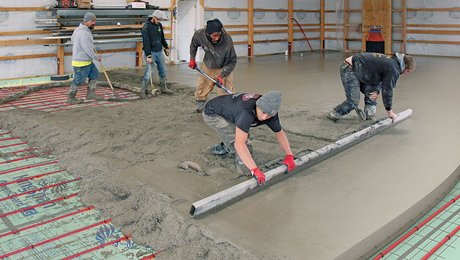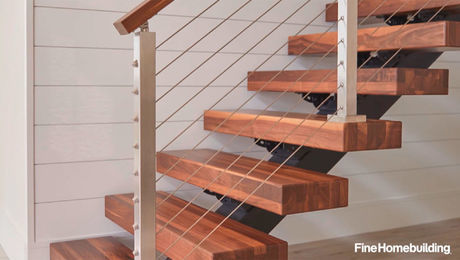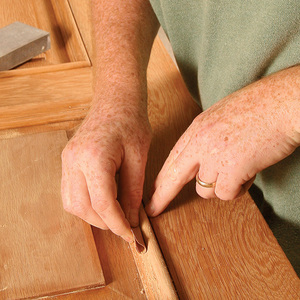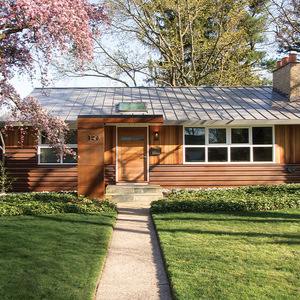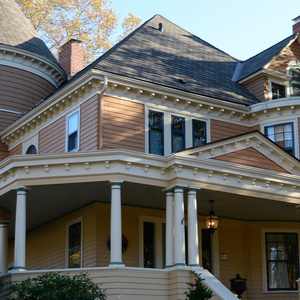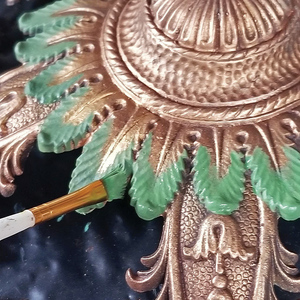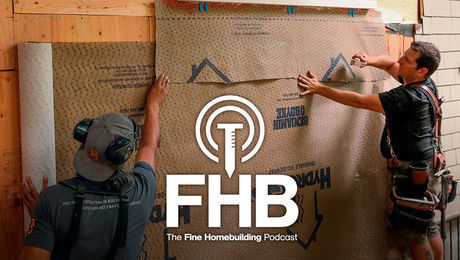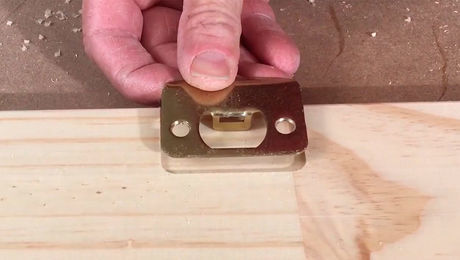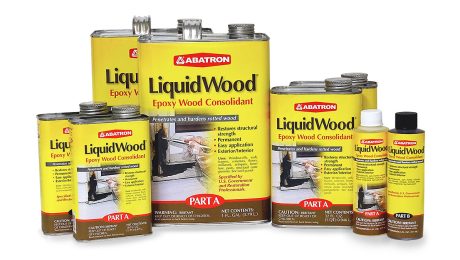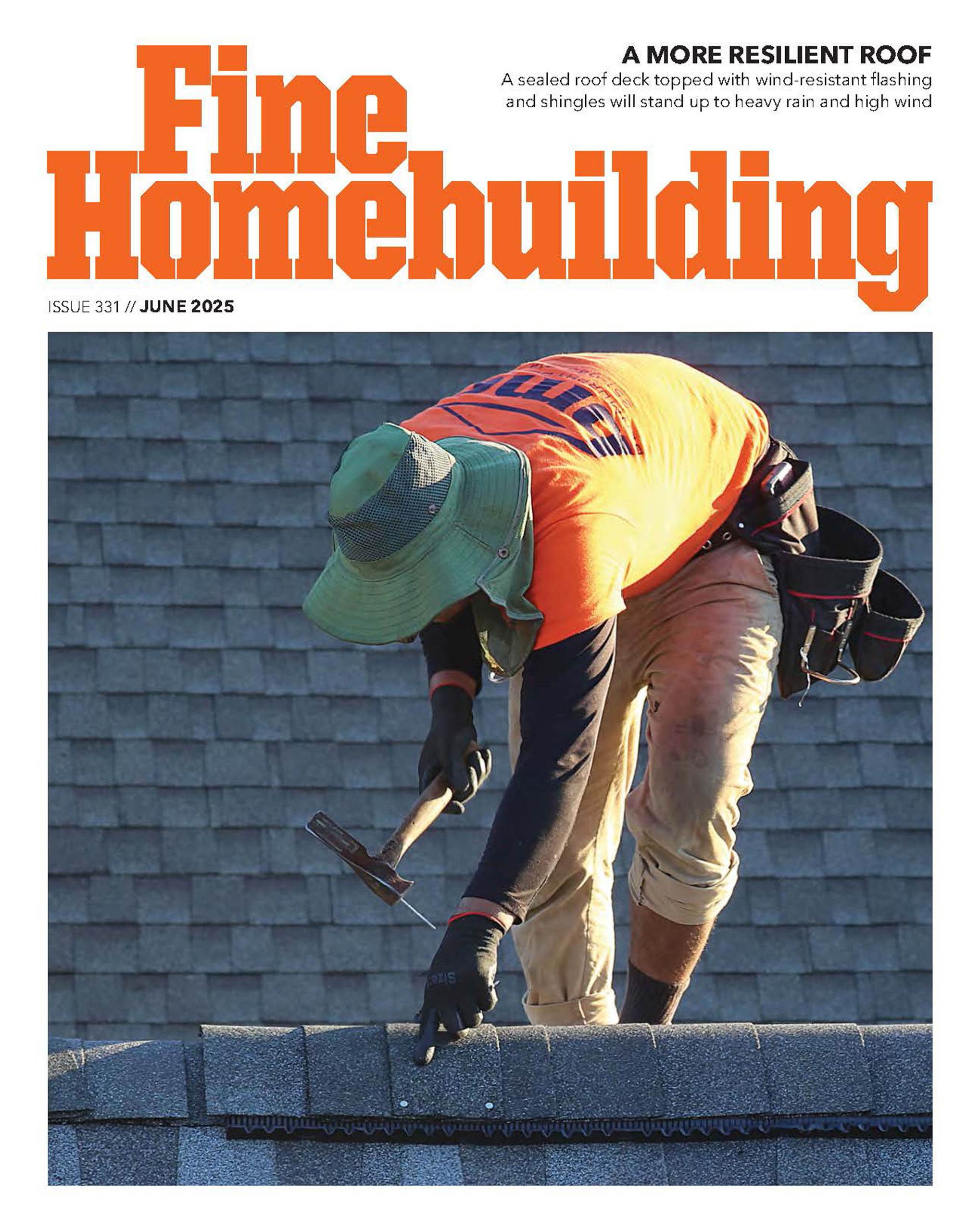Rescuing Old Hardware
Whether it’s already in your house or picked up at a flea market, vintage hardware almost always needs help.
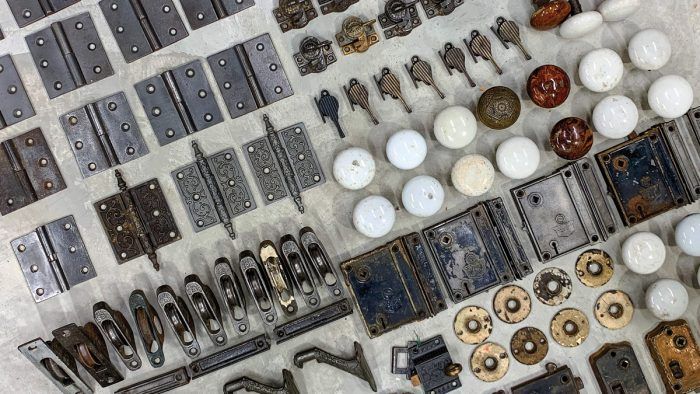
Architectural or builders’ hardware such as doorknobs, locks, latches, hinges, and window catches are among the most prized details in any vintage house. Over the decades, these functional pieces of house jewelry tend to take a beating. Rust, tarnish, multiple coats of paint, missing parts, and damage from missing or stripped screws compromise the integrity of these essential bits.
Depending on the period and materials, vintage hardware may be better or lesser than what’s made today. Old hardware comes in many more designs than reproduction but some of it was stamped and inexpensive. Often the new pieces are heftier. Here’s how to rescue them.
Finding the Right Approach
Judging by the advice on social media, restorers and do-it-yourselfers are all over the map when it comes to methods of cleaning and refurbishing original and salvaged hardware. While some use a traditional hot-water bath or baking soda and vinegar, others have gotten great results from newer approaches. That said, there are still folks out there applying chemical strippers to rare old bits of hardware that deserve more sensitive treatment, or polishing hardware that may not need it.

Before cleaning or stripping any household hardware, it’s essential to understand what you have. Are those steeple hinges solid bronze, or plated cast iron? Is the doorknob with the pinkish-gold appearance just dirty, or do you have a rare finish called rose gold?
Solid or Plated?
As a first step, determine whether a piece of hardware is solid—cast or pressed from a single metal—or plated. Common in the first decades of the 20th century, plated hardware is made from blanks of steel, cast iron, or pot metals that are dipped into a solution and electroplated with a finer, more expensive finish. Like today’s forever-shine finishes, plating was an early form of tarnish prevention. When the plating wears thin, however, the underlying base metal shows through.
Most dirty hardware benefits from cleaning but in some cases a wet bath can disturb the existing patina. For instance, water may cloud the finish on lacquered brass, so test for lacquer first. Apply a small amount of polish to an inconspicuous area, such as the back of an escutcheon. If there’s no color change, the piece is lacquered. Use a soft cloth or chamois to clean it. If it is not lacquered, the cloth will turn black and the piece can be cleaned or polished.
Find a similar dilemma with cast iron. The metal is prone to rust and must be cleaned with care. While some of our contributors have successfully cleaned cast iron using the water bath method, it’s essential to thoroughly dry each piece and coat it with a sealer such as linseed oil to inhibit new rust forming.
Which Tools Are Best?
Should hardware that’s tarnished or rusty be cleaned with fine steel wool, toothbrushes, or even paper towels? That’s up for debate, since all three may have unintended consequences. Steel wool can leave behind fibers that rust, for example; toothbrushes and paper towels can burnish delicate surfaces.
The same goes for polishing. Even good-quality polishes contain abrasives, which can burnish or even remove certain finishes, notably the dark dyes that often appear in recesses on intricate late-19th-century Aesthetic Movement hardware.
Finally, when a suite of hardware is so badly tarnished or corroded that the plated finish is worn through and exposes the base metal, professional tarnish removal or replating is always an option. Professional platers remove heavy tarnish by subjecting the hardware to a light battering with glass beads, which gently lifts the tarnish. The same pros can also strip the entire finish and replate the piece for a period appearance.
To Polish, or Not?

Before you polish any piece of hardware, consider whether you can tolerate continuing maintenance. Once polished, unlacquered brass and hardware containing silver or gold all require frequent polishing to keep them tarnish-free.
Be aware that every time hardware is polished, a thin layer of metal is removed. Even small amounts of polish tend to collect in crevices and are difficult to remove, obscuring fine surface details.
A better option, especially for hardware with patina, is to clean and buff the surface with a chamois, a soft cotton cloth like an old diaper, or the lintless, untreated Sylvet cloths used for jewelry. These soft materials will remove tarnish and add shine but do not burnish hardware surfaces.
Plated Finishes
The explosion of builders’ hardware in the 1910s and 1920s allowed builders and homeowners to outfit a dwelling with door sets, hinges, mechanical doorbells, and other arcane hardware in more than two dozen standard finishes. Finishes included multiple varieties of plated nickel and silver, sanded and brushed finishes, “rose gold,” and the unusual japanned or “gilt and satin” striped finishes. Some examples, from the common to the spectacular:
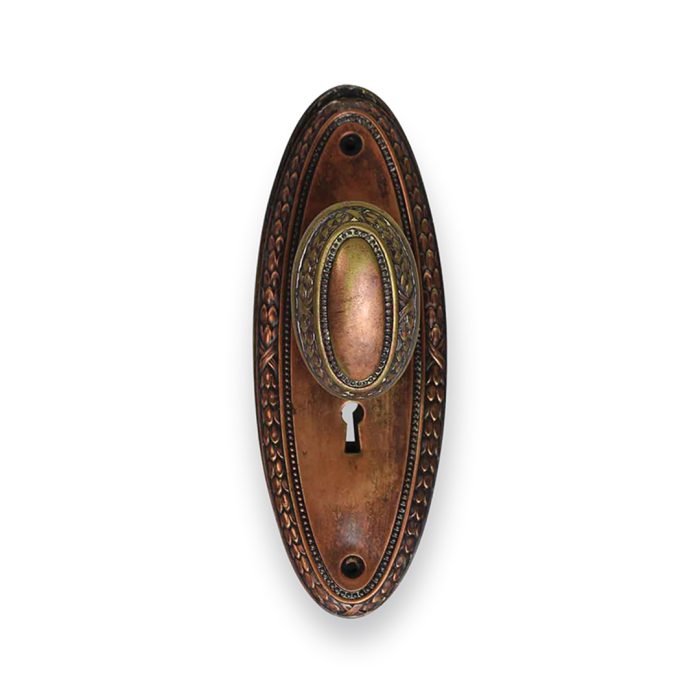 |
 |
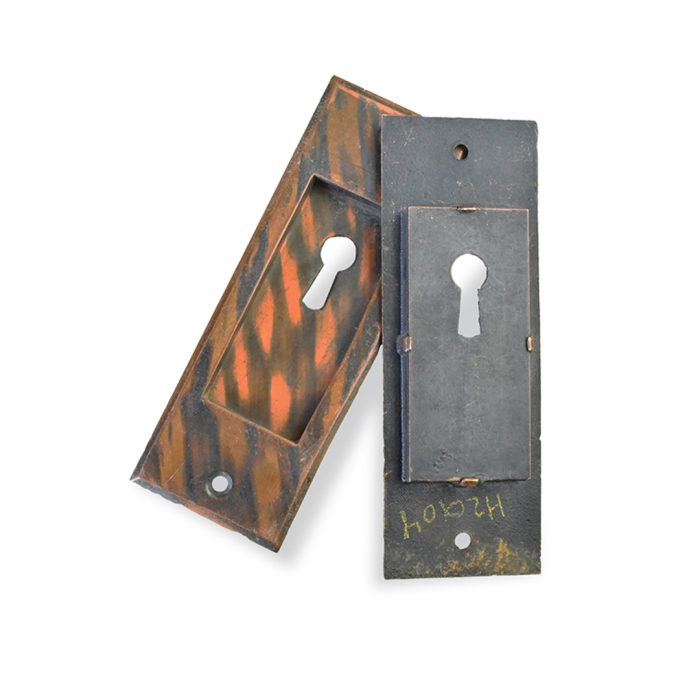 |
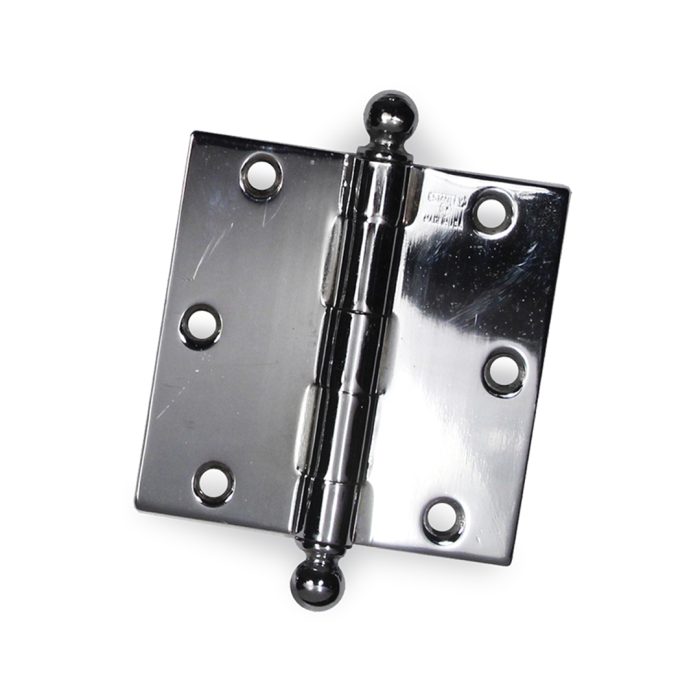 |
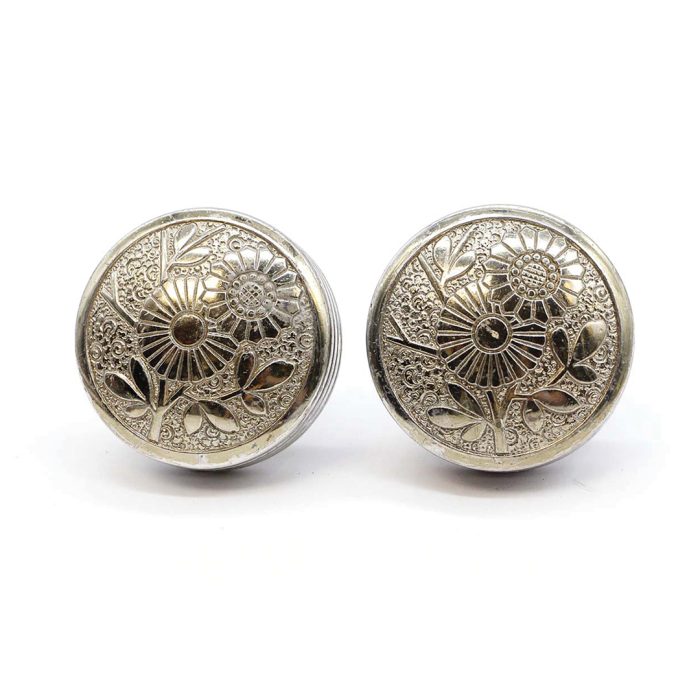 |
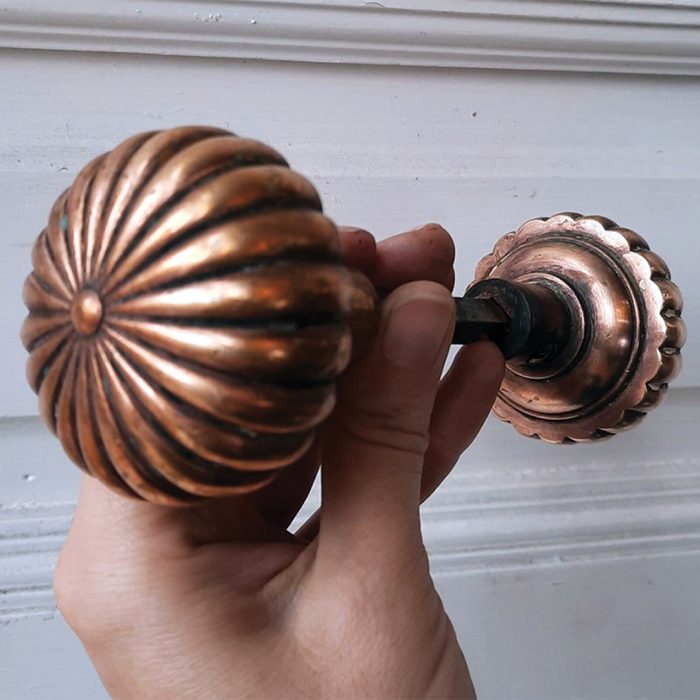 |
Shop Tour: Nostalgic Warehouse
Founded more than 40 years ago as the offshoot of a successful salvaged-hardware business, Nostalgic Warehouse now offers one of the most widely recognized and respected collections of historical-reproduction hardware in North America—in styles from vintage to modern.
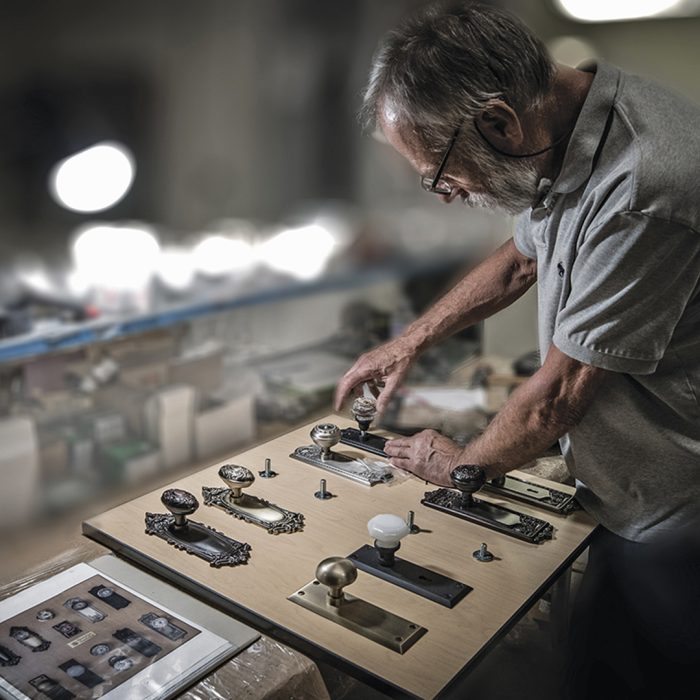 |
 |
The company’s interior and exterior door and cabinet hardware collections are adapted from period originals from the heyday of builders’ hardware (1880 to 1930). All hardware is designed to fit most doors made in the past 75 years and also can be retrofitted on many older doors.

“What we do is actually better than the original,” says William Metzger, Nostalgic’s director of product development. “A lot of these older designs were stamped steel with brass plating, stamped brass, or crude brass castings. Our stuff is forged. It’s thicker, the surface has fewer imperfections. The details are better.”
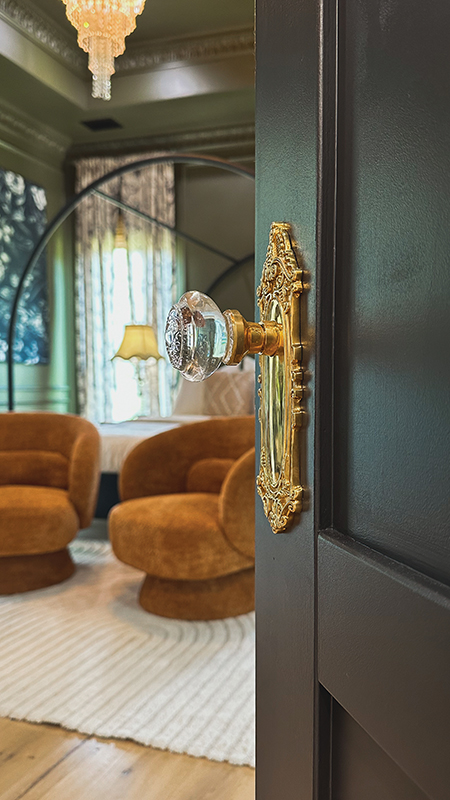
Brass components can also be more durable than stamped and pressed hardware from the early 20th century. Forged brass is made by pressing red-hot brass under up to two million pounds of pressure per square inch: “You are never going to see a broken lever, plate, or knob from us.”
Nostalgic Warehouse is one of four companies under the umbrella of Regal Brands, a division of Acme Manufacturing. The others include the higher-end, period-inspired Grandeur line; Ageless Iron, which is more affordably priced than similar solid-bronze hardware; and the contemporary Viaggio line.
Any door that’s between 1 3/8″ and 1 3/4″ thick can be retrofitted to accept hardware from Nostalgic Warehouse. Plates and rosettes are designed to be interchangeable with every doorknob or lever offered across all collections. Options for door sets include a host of knobs and levers, including crystal in multiple shapes, sizes, and colors.
Nostalgic’s crystal is also now lead-free. It has the beauty and clarity of real lead crystal without the hazards, thanks to a more eco-friendly formula that’s a proprietary secret. All hardware is assembled at the Nostalgic Warehouse factory, which is in Denver, Colorado.
Removing Rust & Paint
Use the gentlest method possible to remove paint and rust. Avoid cleaning painted hardware with any kind of paint stripper. This is especially true for plated hardware and solid hardware that’s been recess-dyed, because chemicals in the stripper may eat away dyes and electroplated finishes.
The best cleaning method for rusty or paint-covered hardware is one of the oldest: the hot-water bath, which shocks the hardware and makes the metal expand, breaking the bond with the paint. Adding baking soda to the mix helps accelerate the process, though not all restorers use it. Buff the metal clean with a soft cloth after drying.
Slow Cooker Method
Regular contributors Alex and Wendy Santantonio use a slow cooker dedicated to the purpose to remove grime and paint from the cast-iron Corbin rim locks they favor, adding a squirt or two of linseed-oil soap in the water.
 |
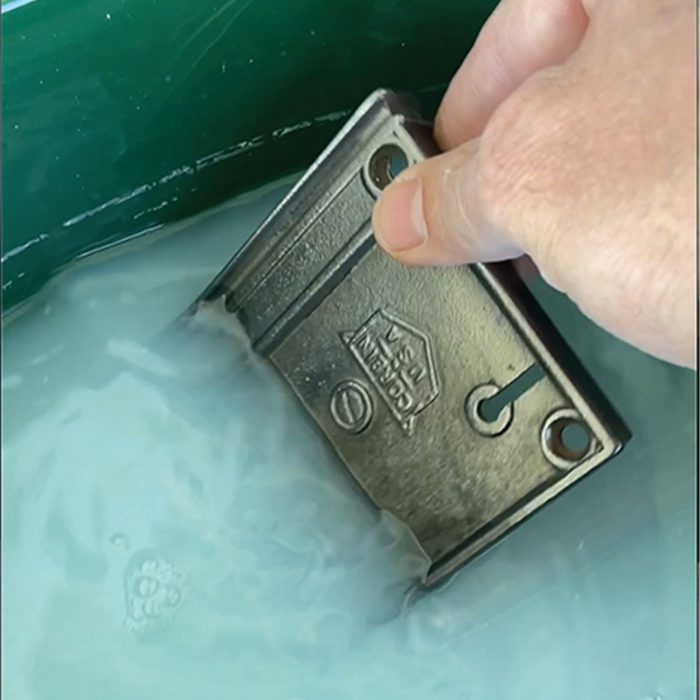 |
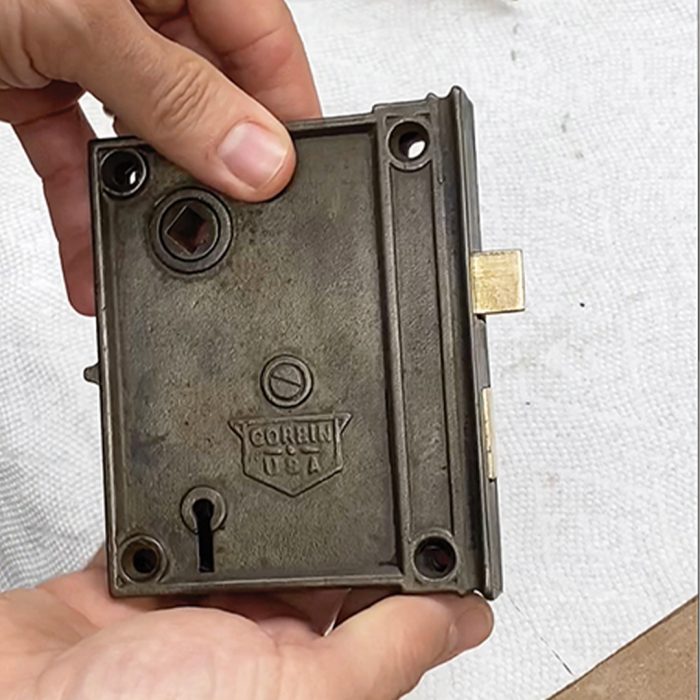 |
Chelation Method
When the windows in Gina Bellous’s 1895 Queen Anne were removed for refurbishing, the hands-on restorer removed all of the window hardware for cleaning. She soaked most pieces in Metal Rescue, an environmentally friendly, biodegradable medium that breaks the bond between rust and metal.
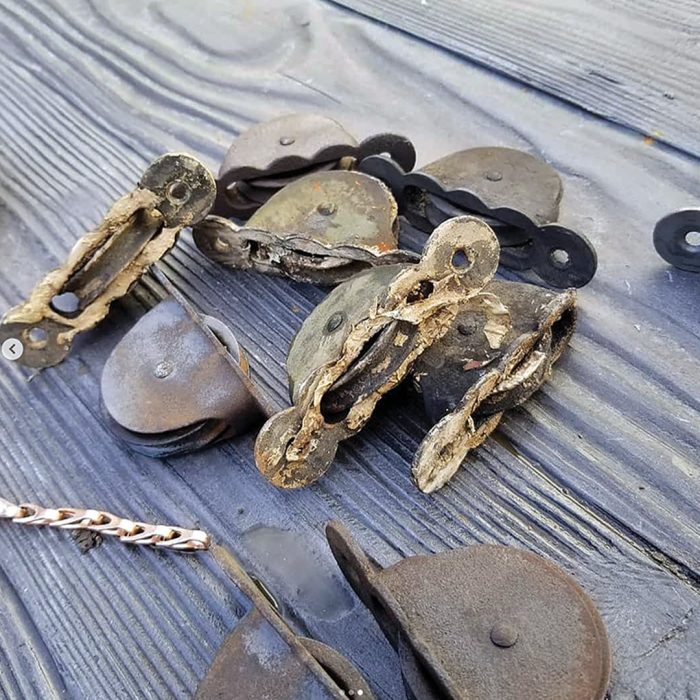 |
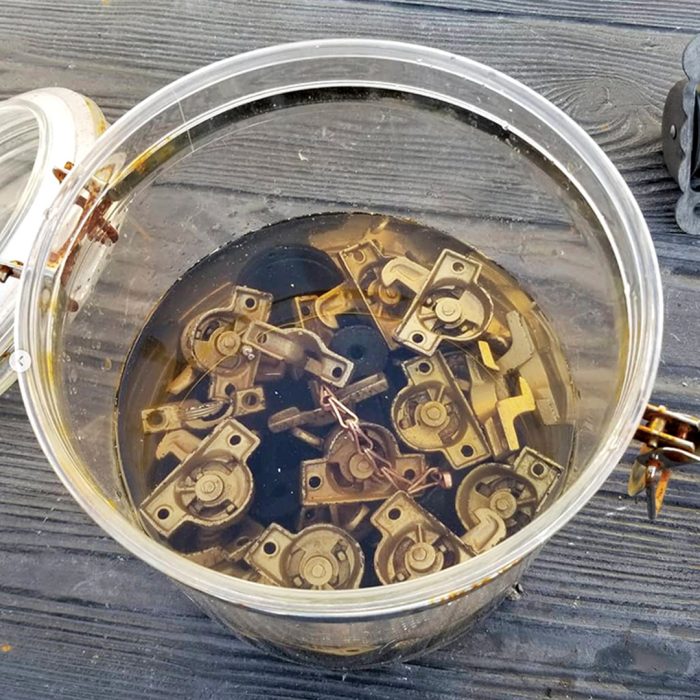 |
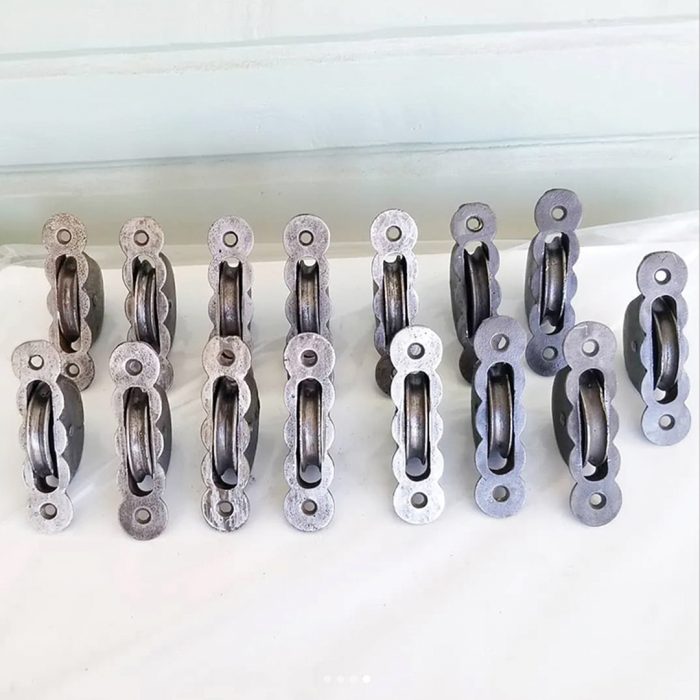 |
Stripping in Place
To strip hardware that can’t be removed, like an old mortise lock, make a thick poultice of baking soda and vinegar and apply it to the surface. Cover the hardware with plastic wrap taped in place and leave overnight. Peel off as much of the loose paint as possible, then use damp cotton swabs or a manicurist’s orange stick to get residue out of crevices.
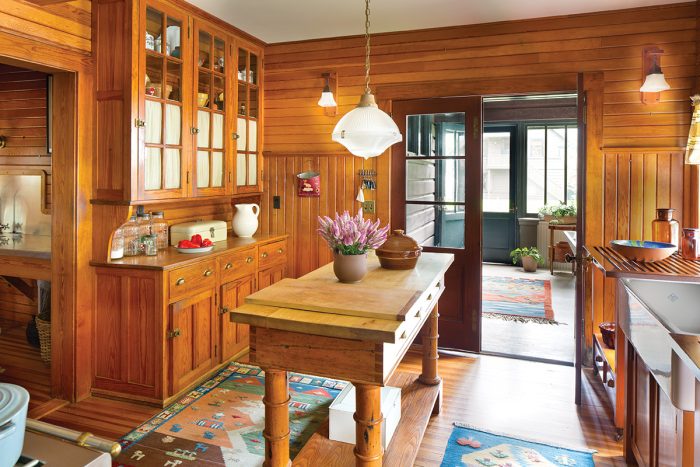
Metal Detection
To test whether a piece of hardware is solid, lightly scratch a hidden area, such as the back, with a razor blade. If all you see is more of the same overall color, the metal is solid. If the scratch shows a different color, it is plated.
The raw color in the scratch can be a tip-off, too. Yellow is brass; silver is nickel or German silver (silver mixed with base metals, which permits a high polish). Hardware suspected to be cast iron or stamped steel maybe tested with a magnet, which will stick firmly to either ferrous metal.
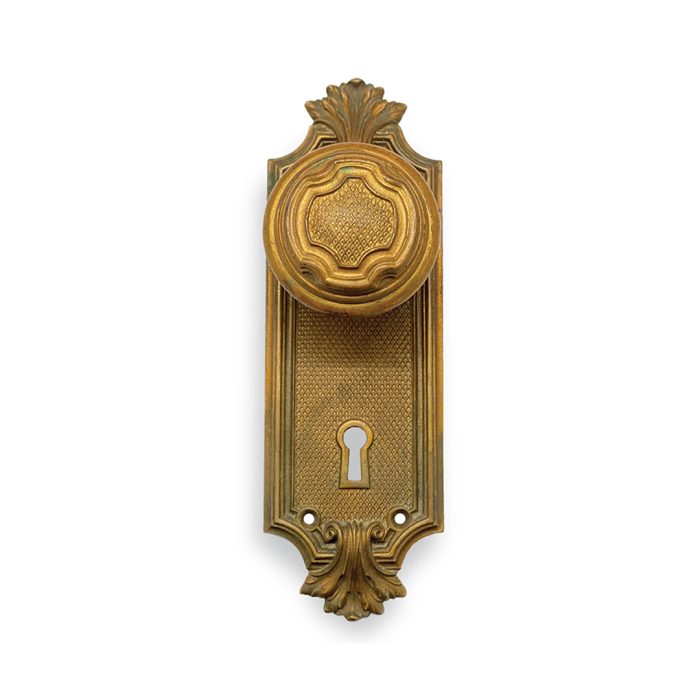 |
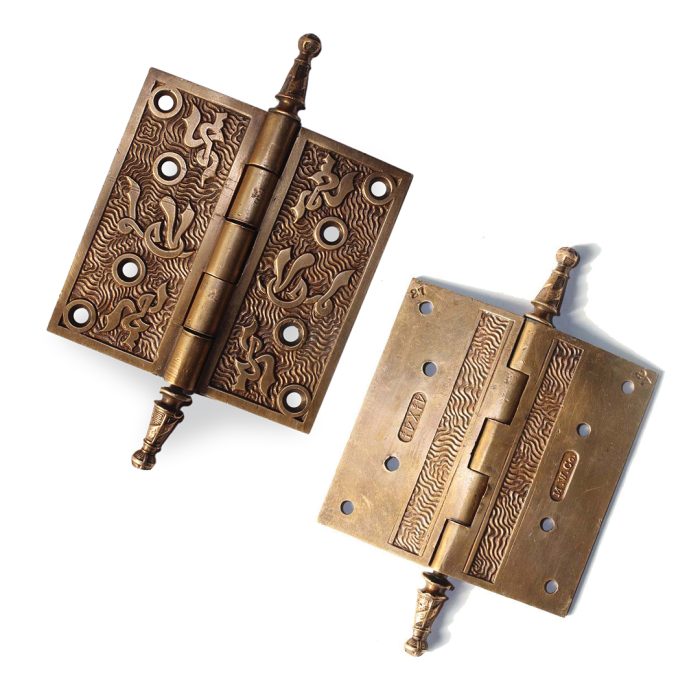 |
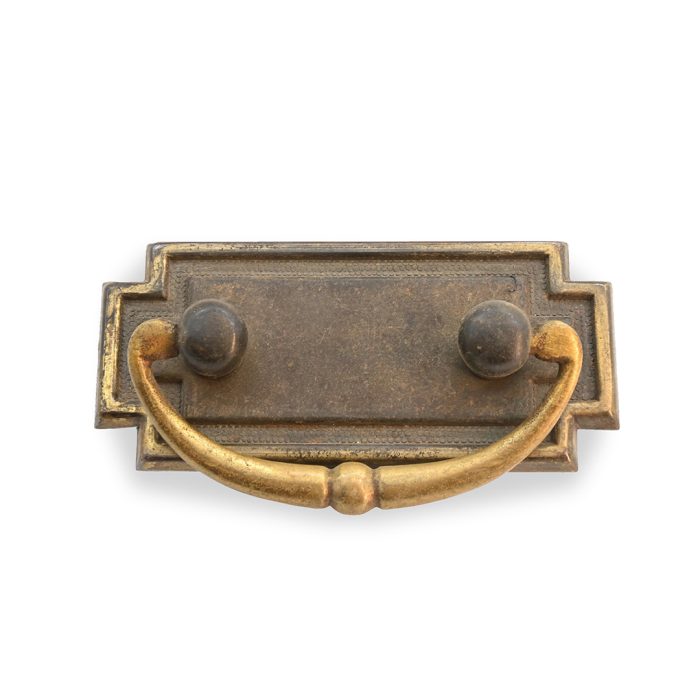 |
 |
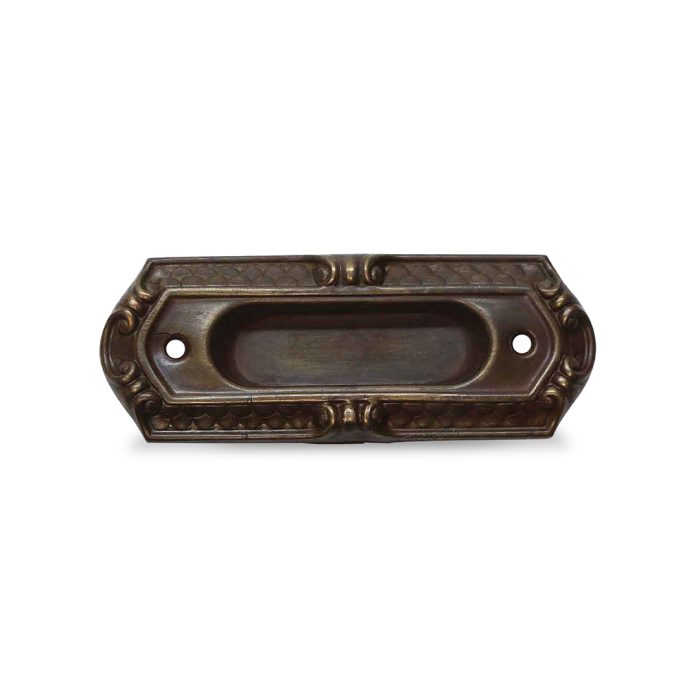 |
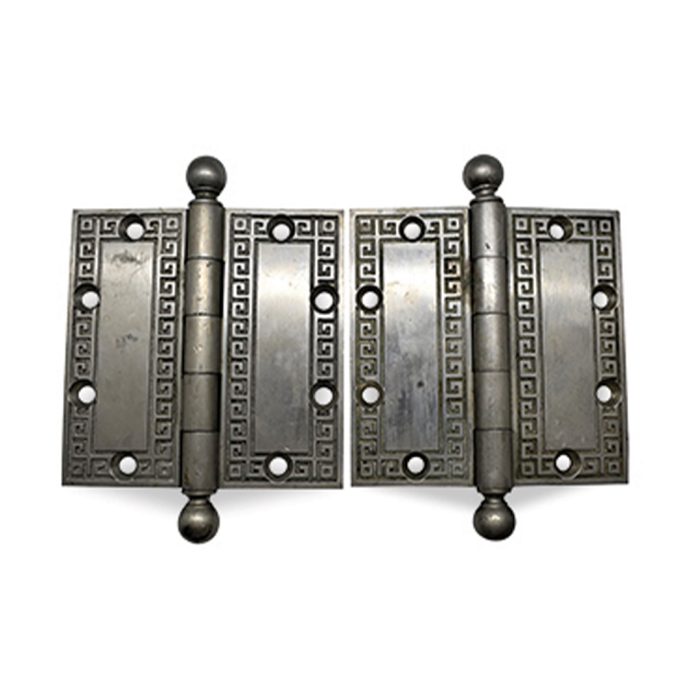 |
— Written by Mary Ellen Polson; creative content editor and technical writer with over 20 years experience.
RELATED STORIES

